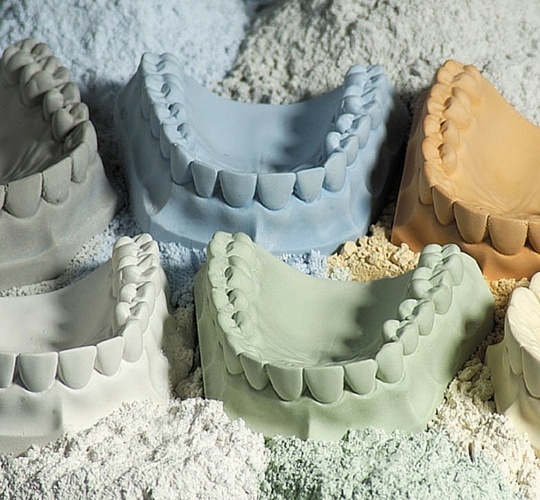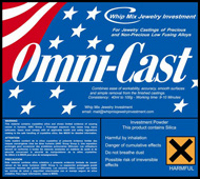ResinVest is designed primarily for burning out resin patterns. Like most phosphate investments, it can be burned out at the high temperatures used with high fusing alloys like non-precious, as well as precious, semi-precious alloys and pressable ceramics. Most phosphate investments will allow the burn out and casting of printed patterns with some degree of success, but the burnout has to be conducted carefully. It usually means placing the rings into a room temperature burnout oven and slowing raising the temperature. The unique characteristics of ResinVest allow printed patterns to be placed into an already hot oven, without the need to wait on lengthy rate climbs to the ideal casting temperature.
Like any other phosphate investment, it is important to adhere to the recommended total liquid/power ratio. In the case of ResinVest, this is 22ml total liquid to 100 grams of powder.
Also important is using clean mixing bowls in reasonably good condition. Old, worn mixing bowls can cause expansion and setting issues. Ill-fitting castings, having to use more colloidal liquid, and cracking rings all can be a sign that bowls should be changed. Over time the walls of the bowl wear and move further away from the paddle if only by small amounts. This additional gap keeps some of the investment from being fully mixed during the recommended mixing time. The mechanical energy during mixing is necessary to start the chemical reaction that gives the investment all of its desirable properties. The first sign that the bowl is becoming an issue is the need to increase the colloidal liquid-to-water ratio.
This is most obvious when using non-precious alloys as they have the highest liquid concentration to begin with. All alloys can be affected as you experience the need to use greater and greater amounts of liquid to water.
A good rule of thumb is: if you cannot remember the last time you changed your bowl, you may want to consider doing so. Because if the investment fails to mix thoroughly, you may also start causing cracked or exploding rings. This may happen if the correct chemical reaction doesn’t occur as the result of an unsatisfactory mix and a weakened structure.
Not all resins are created equal. While ResinVest is very resilient and an excellent choice for casting and pressing resin patterns, it is always a good idea to check with the resin manufacturer and ensure their formula is intended for burnout. Using a non-castable resin can result in mold failure and an unusable casting or pressing.
In most cases resins can be introduced into an already hot oven (rapid burnout), but keep in mind that some may need to go in at lower temperatures to ensure optimal results. Always remember to not only look at the investment instructions, but also the resin instructions for burnout. In addition, something to factor in is the alloy to be cast or the ceramic material that is being pressed and the temperatures those manufacturers recommend.
Use and storage of the material in a proper environment is also critical for the longevity of the investment properties. Ideally, the powder, liquid and water should be kept indoors in a stable environment without temperature or humidity fluctuations. For best results 68°F (20°C) – 77°F (25°C) with humidity at 40% or below.
No investment will work perfectly every time. No manufacturer can guarantee that, but by observing some basic principles you can get more consistent results and cut down on the need for costly remakes.










Leave a comment